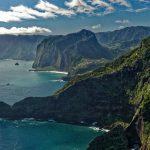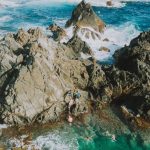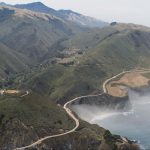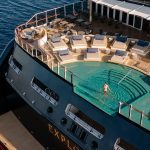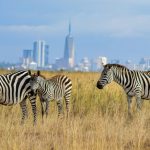Dominica Cable Car among new developments on the island
Dominica is on the verge of taking its tourism infrastructure to new heights.
Marva Williams, CEO of the Discover Dominica Authority, told a recent Caribbean Hotel & Tourism Association Caribbean Travel Marketplace audience that the Dominica Cable Car is set to begin operation in December, and will be the world’s longest detachable cable car, “stretching 6.6 kilometers from the Roseau Valley to the legendary Boiling Lake. What once was a six-hour trek will become a breathtaking 20-minute journey through a UNESCO World Heritage rainforest.
“Imagine soaring over the iconic Trafalgar Falls, spotting the rare Sisserou parrot, and witnessing the geothermal wonders of the Valley of Desolation — all while knowing that this project created over 450 jobs during construction and will sustain more than 150 permanent positions. The cable car symbolizes our commitment to sustainable development and community empowerment,” she told the Antigua gathering.
Williams said Dominica — which she labelled the “nature island of the Caribbean” — is leading the Caribbean in clean energy innovation. By the end of this year, a 10-megawatt geothermal plant will supply 50% of the destination’s peak electricity demand, a first for a Caribbean nation. The development “reduces energy costs, cuts carbon emissions, and fortifies the island’s climate resilience,” she said.
“Our hotels in Dominica are also leading the way in sustainability, reflecting our island’s deep commitment to eco-friendly tourism,” Williams continued. “Many have adopted green practices like solar energy, rainwater harvesting, reducing plastics, and sourcing food locally to support farmers and lower carbon footprints. Resorts such as Jungle Bay, Rosalie Bay, and Coulibri Ridge exemplify this approach — using renewable energy, conserving wildlife, and building with local materials while empowering communities. These efforts extend beyond hospitality, as many properties actively engage in environmental education, reforestation, and coral reef protection, advancing Dominica’s sustainable development goals.”
Williams also reported the island is seeing projects that will appeal to those who appreciate the sea.
Images courtesy of Scott Sporleder
“Our Cabrits Marina project, a US$201-million investment, currently under construction, will position Dominica as a premier yachting destination. It will accommodate vessels up to 150 feet and have a vibrant marine village for dining, shopping, and cultural exchange — all anchored in strong environmental protection.
“Finally, I want to highlight our island’s extraordinary underwater treasures. Dominica’s volcanic underwater landscapes and protected marine reserves offer some of the most unique and pristine diving experiences in the world. From the famous Champagne Reef with its geothermal bubbles to the spectacular pinnacles and walls teeming with marine life, our dive sites attract eco-tourists and international media alike. We are proud to be one of the few places where divers can swim alongside majestic sperm whales, in the soon-to-be-declared first sperm whale reserve in the world, further showcasing our commitment to conservation and sustainable tourism.”
Down the road, a new international airport on schedule for completion in 2027 will welcome direct flights from North America, Europe, and beyond. The facility will have a a 2,850-meter runway and a climate-resilient design powered by geothermal and solar energy, double double Dominica’s visitor capacity and generate over 1,000 construction jobs, along with long-term opportunities in tourism.
“As we await our international airport, upgrades at Douglas-Charles are already paying off,” Williams reported. “American Airlines will offer six weekly flights from Miami in August, scale back to two in September, then resume daily service in October for Independence and the World Creole Music Festival — rising to eight weekly in November and December. United Airlines also now flies direct from Newark weekly. The Nature Island is closer than ever.
“Our Kool Escapes campaign is already inviting travellers from North America, Europe, and the Caribbean to experience Dominica’s unique blend of nature, culture, and adventure. Supported by new airlift and exclusive travel packages, this campaign builds on the strong momentum of 2024, when Dominica saw a 13% increase in visitor arrivals compared to the previous year. And we’re just getting started.”
Williams added that she and her colleagues believe that tourism must benefit the people who live in the promoted destinations and its community-based tourism strategy ensures that Dominicans are the primary beneficiaries of a growing industry.
“Take the Kalinago Territory, for example — the home of the Eastern Caribbean’s last Indigenous community. Through eco-tourism, sustainable agriculture, and cultural preservation, the Kalinago people are earning livelihoods while safeguarding their legacy. At the Kalinago Barana Aute cultural village, visitors can explore traditional crafts, taste local cuisine, and engage with a proud, resilient community thriving through sustainable tourism.
“Our culture is alive and pulsing with pride. Mas Domnik 2025, our vibrant annual carnival, saw a 34% increase in visitor arrivals and injected over $25 million into the economy. From the rhythm of Bouyon music to our traditional and contemporary costume bands, it was the safest and most authentic carnival in the region.
“Looking ahead, we eagerly anticipate the Silver Jubilee of the World Creole Music Festival from Oct. 24–26 — a landmark celebration that will highlight Dominica’s rich culture on the world stage.
“Dominica is not just keeping pace with global tourism trends — we are setting them,” Williams added. “We are defining what it means to be a sustainable and green destination: Where nature is respected, where communities lead, where innovation fuels resilience and where every traveler is transformed by the journey.”

